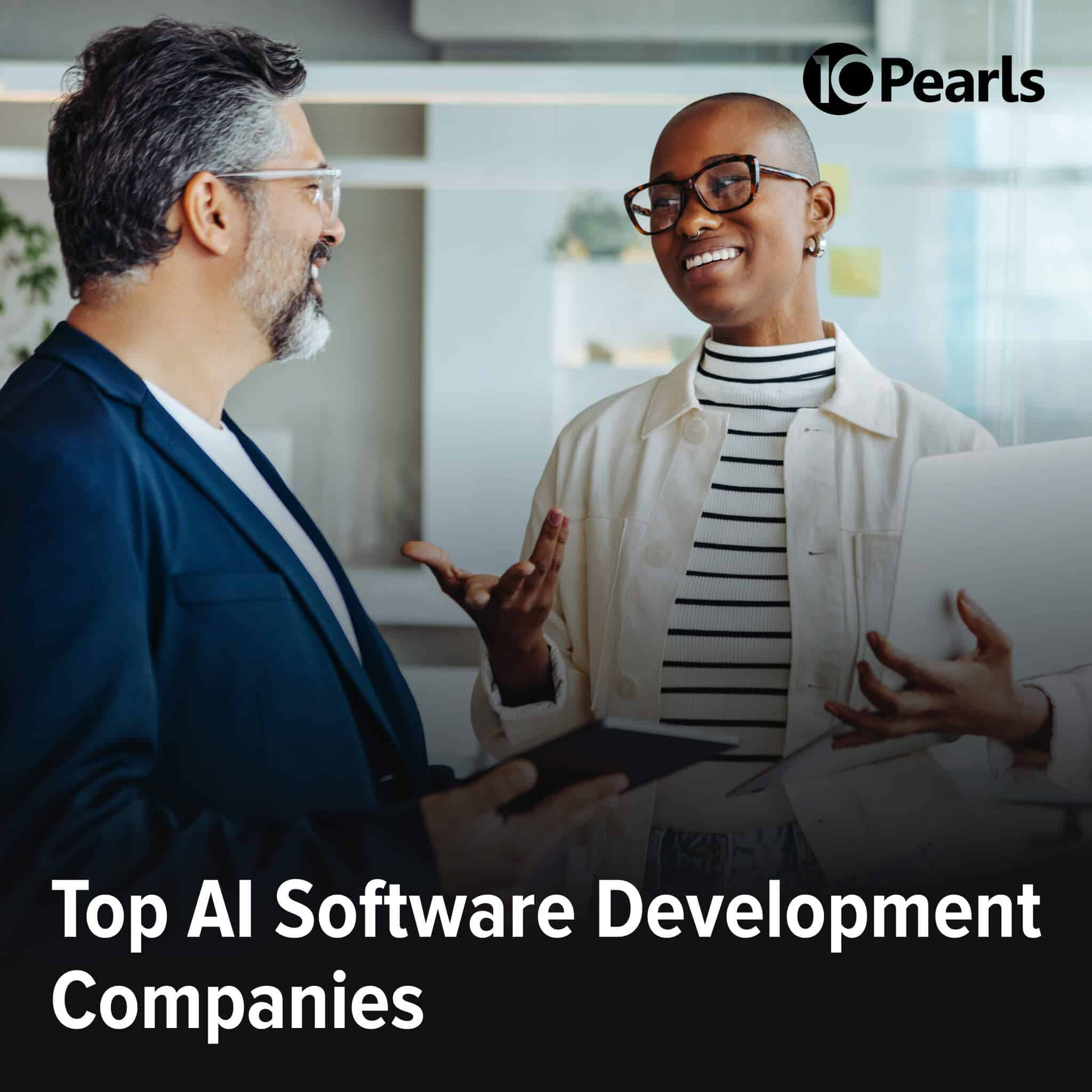Top Software Development Technologies of 2025 - 10Pearls


A global team of technologists, strategists, and creatives dedicated to delivering the forefront of innovation. Stay informed with our latest updates and trends in advanced technology, healthcare, fintech, and beyond. Discover insightful perspectives that shape the future of industries worldwide.
Top Software Development Technologies: 2025 Overview
Cutting-edge software development technologies, including tools, frameworks, and programming languages, will drive the industry forward in 2025. This blog will explore the top technologies and list 22 tools to consider for your pipeline.
It comes as no surprise that artificial intelligence will play a major role in software development this year. Technologies like generative AI significantly streamline the software development, testing, and delivery process, helping companies get applications out the door faster. Other technologies, including low-code/no-code, microservices, containers, and serverless computing, are similarly accelerating development while also improving code quality, application performance, and reliability.
Top software development technologies of 2025
| Technology | Description | Tools |
| AI & machine learning | Automates development tasks including:
|
|
| Low-code & no-code | Uses GUI tools to reduce (or even eliminate) the amount of manual coding involved in building a software application or feature |
|
| Microservices & containers | Break apps down into individual services packaged into self-contained modules that run independently of each other |
|
| Serverless computing | Provides backend services on an as-used basis, so development teams don’t need to worry about the underlying infrastructure |
|
| AI-powered CI/CD | Uses AI to automatically and continuously test, integrate, and deliver code to improve quality without slowing down development |
|
The top software development technologies of 2025
AI and machine learning
Artificial intelligence and machine learning technologies continue to evolve at a rapid pace. AI and ML tools can automate numerous software development tasks, such as testing, code reviews, code optimization, and performance monitoring, to help accelerate releases while improving code quality. Unlike traditional automation tools, which simply execute scripts and playbooks, AI/ML can “learn” from the situations it encounters to improve its capabilities and predict future outcomes.
Examples of AI and machine learning tools for software development include:
- Functionize – AI-powered automated user workflows for functional testing
- Applitools – Visual AI and generative AI tools for testing, root-cause analysis, and automated maintenance
- Snyk Deepcode AI – Static application security testing (SAST) and AI code optimization tool
- Datadog – AI-powered application performance monitoring and continuous code profiling
- Splunk – Full-stack application performance monitoring and optimization with generative AI tools
Low-code & no-code
Low-code and no-code technologies reduce — or even eliminate — the amount of manual coding required to build or manage a software application. Low-code/no-code platforms give users GUI (graphical user interface) tools to manipulate application objects with little or no need to access the underlying programming. These tools significantly speed up development cycles and provide less technical stakeholders with greater agency over the features they use.
Examples of low-code and no-code development tools include:
- Bubble.io – Full-stack no-code app builder
- Appsmith – Open-source tool for low-code application development
- Xano – No-code backend software development platform
- Superblocks – Low-code platform for internal app development
- Mendix – Low-code mobile and web application development platform
Microservices and containers
Microservice development breaks an application down into each of the individual services (or microservices) that make it run. Each microservice is developed and deployed independently, which can significantly streamline the development process and allow a great deal of flexibility and agility when features, requirements, or goals suddenly change. Microservices can be packaged into containers, which are self-contained runtime environments with only the specific resources needed to run each microservice. Containers are extremely efficient and resilient because each one can be taken offline without impacting any of the others.
Examples of tools used to develop, deploy, and orchestrate microservices and containers include:
- Docker – Platform for developing, sharing, and running containerized applications
- Kubernetes – Open-source orchestration system for managing, scaling, and deploying containerized applications
- Nomad – Simple scheduler and orchestrator to deploy and manage both containerized and non-containerized applications
- Red Hat OpenShift – Built on top of Kubernetes to add features like integrated CI/CD and enhanced security
- Spring – Java frameworks providing comprehensive tools for microservices backend development
Serverless computing
Serverless computing — also known as functions-as-a-service (FaaS) — is a form of cloud computing that delivers backend services on an as-used basis. Serverless computing providers handle everything involved in provisioning, deploying, and scaling the underlying infrastructure. Serverless architectures are distributed across many smaller infrastructure units, which, as with containerization, makes them very agile and resilient. They also involve less backend work from development and operations teams, which can significantly streamline development cycles.
Examples of serverless computing providers include:
- AWS Lambda – Serverless computing service offered by Amazon Web Services (AWS)
- Azure Functions – Microsoft’s serverless computing service for Azure cloud environments
- Google Cloud Run Functions – Serverless computing functions offered by Google Cloud
- Cloudflare Workers – Serverless computing service for the Cloudflare environment
AI-powered CI/CD
AI and ML technologies automate several processes that streamline development, which is crucial for CI/CD (continuous integration and continuous delivery). AI-powered tools can be integrated directly into CI/CD pipelines to significantly accelerate development while iteratively improving quality.
Examples of AI-powered CI/CD pipeline tools include:
- GitLab Duo – AI-powered coding assistant to test and improve code quality
- GitHub Copilot – AI code editor that automatically finds and corrects errors
- Harness – AI-native, end-to-end software delivery platform
10Pearls leverages the latest software development technologies to deliver innovative solutions
Implementing new software development technologies can be disruptive and, in some cases, require specialized skills that your existing team might lack. Outsourcing the work to a trusted partner like 10Pearls can significantly reduce headaches because we can ensure you have sustainable solutions that meet your specific requirements and seamlessly integrate with your current tech stack. In addition to our technology consulting, implementation, and integration services, we also offer custom software development services using the latest AI-powered tools to deliver exceptional results in less time and at a lower cost.
Reach out for a risk-free consultation to learn how we can transform your software development pipeline with the latest technologies.



